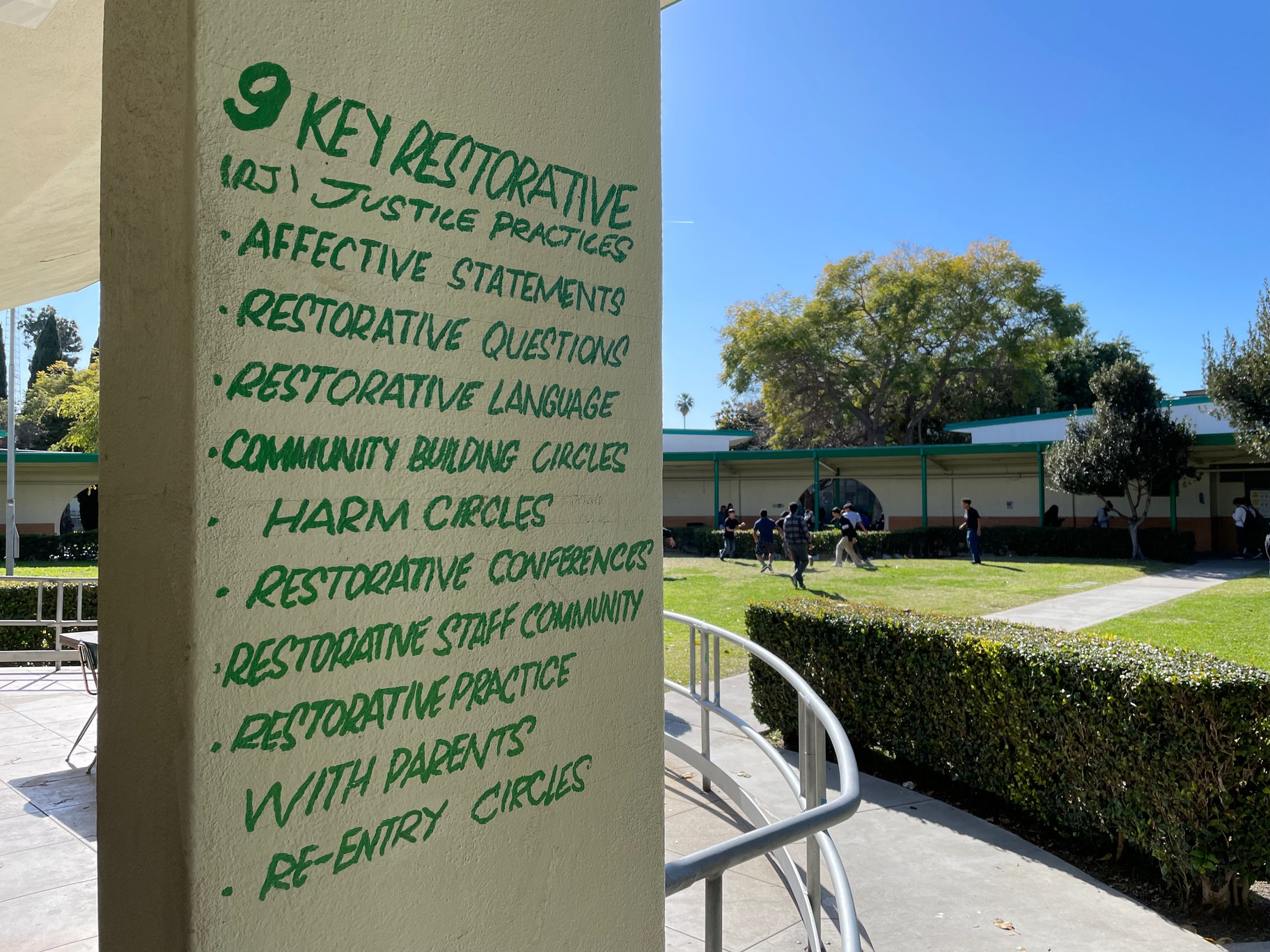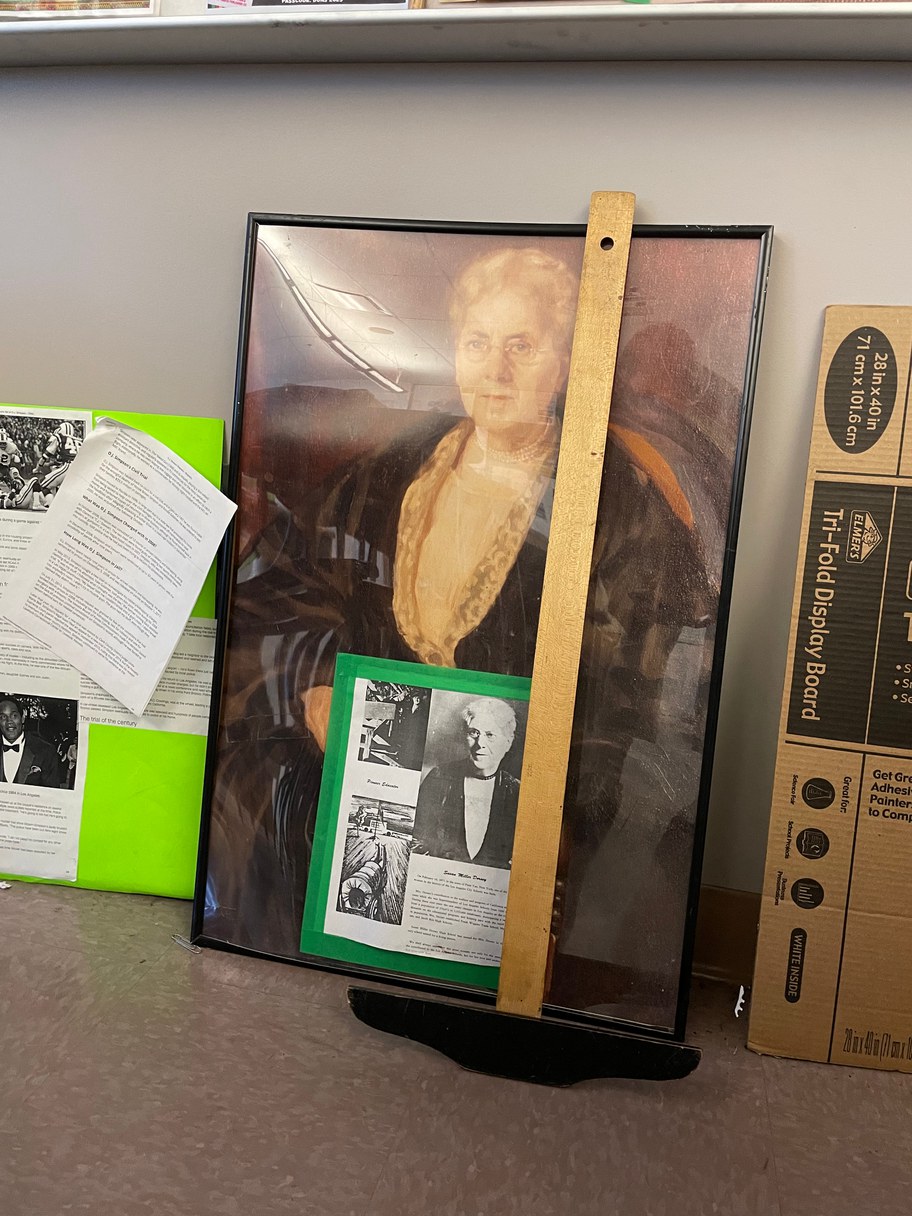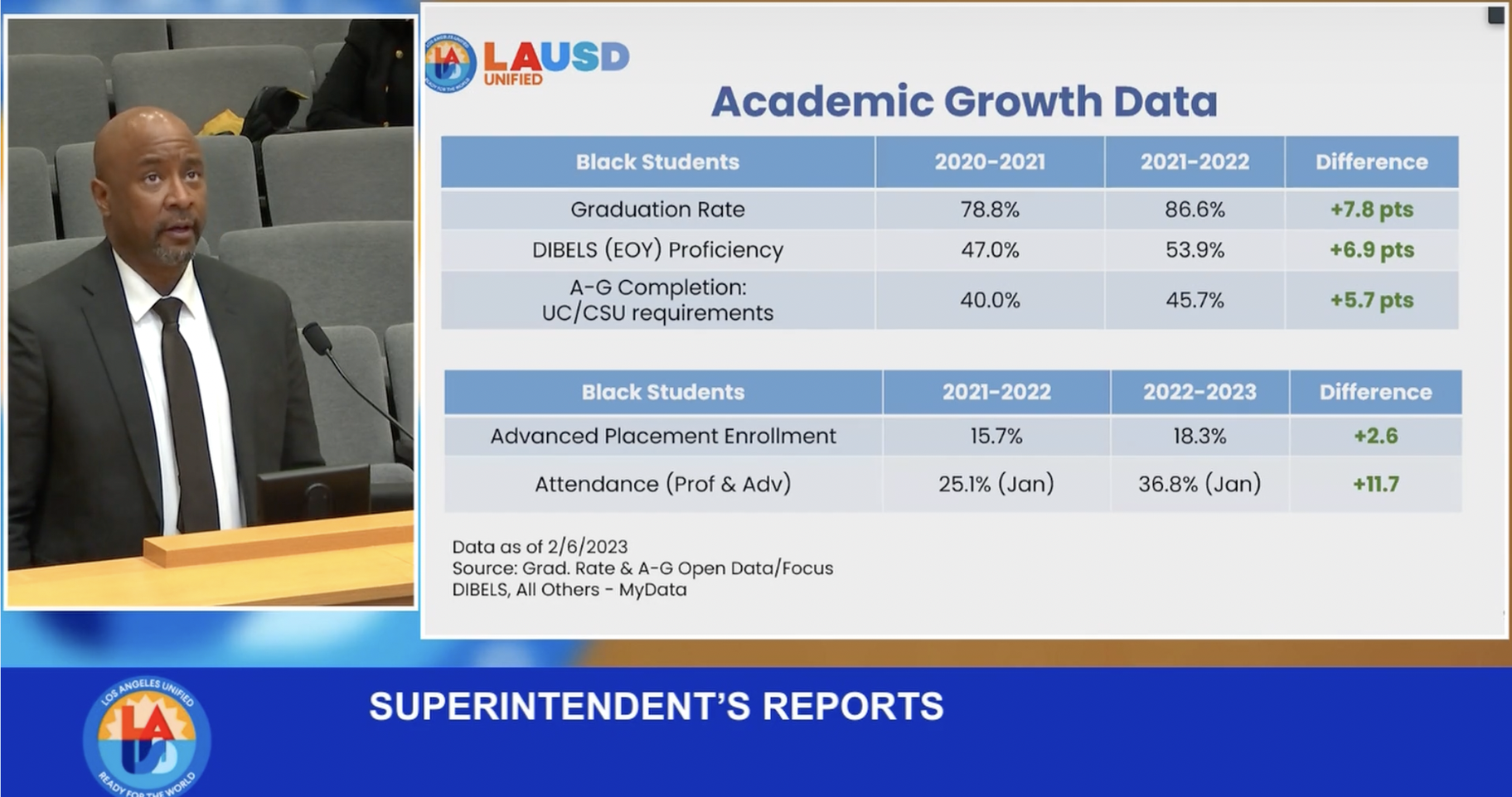When Marshe Doss was a student at Susan Miller Dorsey Senior High School, there were school police headquartered on the campus and students were sometimes randomly searched. As a 10th grader, Marshe recalls, she was pulled out of class with five other students.
“We were told to dump everything out of our backpacks,” including her hand sanitizer, says the 22-year-old, now a community college student. Marshe says it was confiscated. “Their exact words were, ‘I know what you guys do with that. You’re going to go in the bathroom and sniff it and use it to get high.’”
The encounter left Marshe feeling anxious and ashamed. “What about me says that? Is it because I'm Black? Is it because I live in a low-income area or because I go to this underfunded school? Why do you automatically assume I have ill intentions with hand sanitizer?”
The incident spurred Marshe’s activism. She joined a local student organization called Students Deserve, which was fighting to end criminalization policies in LAUSD.
In 2019, the group successfully pushed the school board to put an end to random searches. Then during the George Floyd uprisings in 2020, under pressure from the group, the LAUSD board cut $25 million from the school police budget and committed to invest it in Black students. Two years ago, in February of 2021, the board adopted and funded something called the Black Student Achievement Plan.
“We have mounds of troubling data that shows that Black students have consistently fared poorer than their non-Black peers,” says UCLA education professor Tyrone Howard. He cites gaps in English and math proficiency, graduation rates, access to honors and AP classes, suspension and expulsion rates, and referrals to special education.
The Black Student Achievement Plan aimed to close those gaps by allocating tens of millions of dollars to the LA Unified schools that educate most of the district’s Black students. The money has allowed schools to hire staff dedicated to the well-being and academic success of Black students, build community partnerships, and develop culturally relevant curriculum.
About half of Dorsey High’s students are Black, making the school eligible for a share of those resources. Now, Marshe’s younger sister, Dorsey freshman Aleyah Doss, is having a very different experience at the school than her older sister did. Police are no longer headquartered on the campus, and the school has hired a psychiatric social worker, a restorative justice teacher, more counselors, and “school climate advocates” tasked with improving school culture with conflict resolution and social emotional skills.

Nine tenets of restorative justice are painted on the Dorsey High School campus. Photo by Robin Estrin.
James Wilson, one of Dorsey’s new school climate advocates, says the culture at Dorsey has already begun to change. He says students are more willing “to lean into systems of support.”
“When we first got here, there was a lot of pushback, a lot of resistance,” he says. “Now our doors are revolving. Kids are constantly knocking, and it's because we've done a lot of work to build our relationships, and to make sure that our space is welcoming, accommodating, and attractive to them.”
Funding from the Black Student Achievement Plan has also allowed the school to fund a trip for 30 students to Atlanta, Ga., to tour the area’s historically Black colleges and universities. “Plane tickets have been ordered, we have the chaperones. It's just going to be an exciting experience and really, hopefully, transformative,” says assistant principal George Lin.
Marshe Doss says the transformation at Dorsey was like plucking weeds from a garden and planting seeds. “We’re literally watching it grow,” she says.

A framed portrait of Susan Miller Dorsey, after whom the school was named, rests on the floor in a social studies classroom. Dorsey was the first woman to serve as LAUSD superintendent from 1920 to 1929. Photo by Robin Estrin.
But the focus on Black students, who make up just 7% of LAUSD’s enrollment, has led to resentment on some campuses. Three-quarters of the students in LAUSD are Latino, and many are also underserved.
“There are actors in schools who will never go on the record, but they have some real deep concerns, worries, or just curiosity about why there's a need for such a program,” says Howard.
At Dorsey, the student body is evenly split between Black and Latino students and Wilson says some students have come to him directly with questions about the plan. “Naturally, everybody's like, ‘Well, what about Latino students?’ They're casual, but they're carrying a mantle. Education inequity impacts them tremendously.”
Wilson says all Dorsey students are welcome to use the new resources and attend field trips. And as Howard puts it – “rising tides lift all boats.”
“We have to continue to stress that this is not a zero-sum game,” Howard says. “Giving to Black students does not mean you are taken away from other students.”
Two years after the Black Student Achievement Plan was implemented, regular surveys show Black students and families across the district are more engaged with school. “Black students are feeling heard, they're feeling valued at the school sites, we see an increase in Black students being at school on a regular basis,” says Jared DuPree, who oversees the implementation of the Black Student Achievement Plan for LAUSD.
But academic gains so far have been less pronounced. State testing data from last year shows that the percentage of Black students who are proficient in math and English remains low – in the single and low double digits – depending on grade level.
The district cites improvements in Black students’ graduation rates since the plan was implemented, but education experts have been skeptical of data showing graduation rates in LAUSD at a record high in 2022. The graduation rate data came out just a few months after state testing data showed students across the board backsliding in math and English proficiency. “It just seemed like two narratives that don't coincide with one another,” Howard says.
Other updates show early improvements in early literacy, attendance, and the completion of classes required to attend the state’s public universities.

Jared DuPree, who oversees the implementation of the Black Student Achievement Plan for LAUSD, shares an update with the board and superintendent in February. Credit: LAUSD.
Education experts and district officials say that improvements in school culture should lead to improvements in traditional academic metrics like test scores in due time.
In February, DuPree told the LAUSD Superintendent and Board that he expects to see students' grades and test scores significantly improve by 2026. He also made the case that Black student achievement is about more than test scores – which is how Dorsey grad Marshe Doss sees it.
“Black student achievement to me is a free, healthy, happy, well-rounded Black child,” she says. “It looks like a dreamer.” Like her sister, Aleyah, who’s already thinking about where she’ll apply to college after high school.

